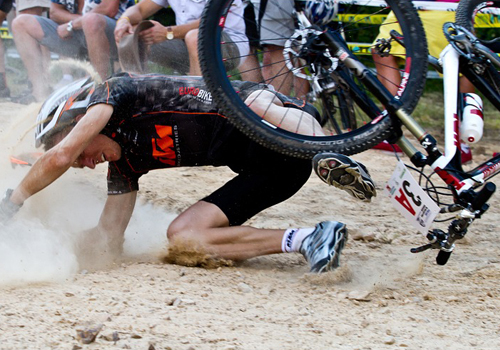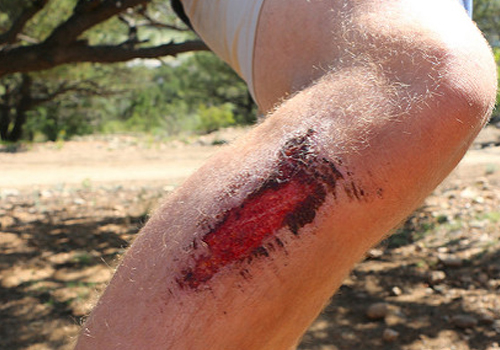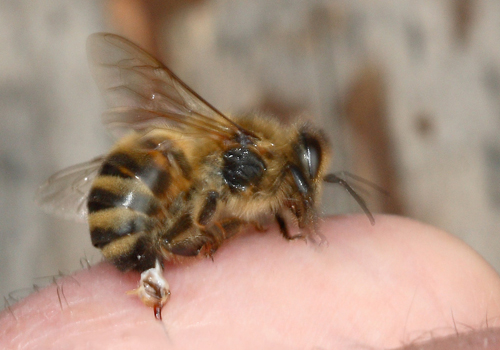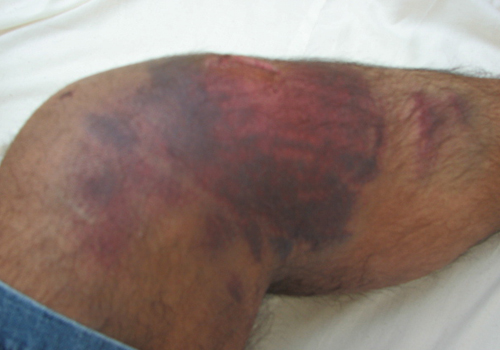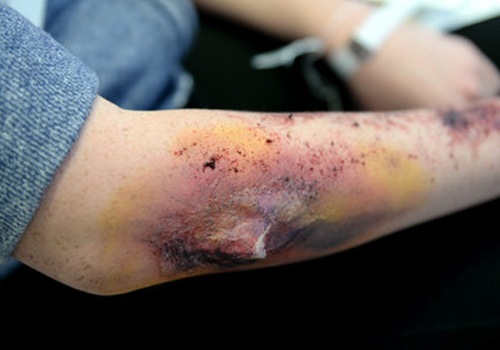What’s in Your Cycling First Aid Kit?

Choosing a Bike Saddle Bag
August 2, 2018
Cycling and Rumble Strips
October 29, 2018Hopefully you will never need any of these items, but like my Uncle use to say, "It's better to have it and not need it, than to need it and not have it." Accidents can and will happen when you ride your bike. The first bike accident I can remember, was when I was a kid. Coming down a huge hill on a fixie, where the pedals move with the rotation of the back tire. I had my feet off of the pedals and when I went to put them back on, I missed because they were spinning too fast. One of the pedals hit the heel of my foot and gave me a pretty deep gash.
Now that I commute to work by bike and am riding more, it's important to be ready if anything goes wrong. Carrying a first aid kit can help you ease the pain if you have a minor accident. Anything more serious than a scrape or bump, like a broken bone or dizziness, you need to call an ambulance. My first major accident on my bike, was when I hit a railroad track that was at an odd angle to the road at 20 mph. My front tire hit the gap between the road and rail and I flipped over the handlebars landing on my shoulder. I did not lose consciousness, and when I tried to pick myself up I could hear the bones of my clavicle (collarbone) crunching. I knew it was broken and called my wife to come get me. A cell phone is an important part of your first aid kit.
Now that I commute to work by bike and am riding more, it's important to be ready if anything goes wrong. Carrying a first aid kit can help you ease the pain if you have a minor accident. Anything more serious than a scrape or bump, like a broken bone or dizziness, you need to call an ambulance. My first major accident on my bike, was when I hit a railroad track that was at an odd angle to the road at 20 mph. My front tire hit the gap between the road and rail and I flipped over the handlebars landing on my shoulder. I did not lose consciousness, and when I tried to pick myself up I could hear the bones of my clavicle (collarbone) crunching. I knew it was broken and called my wife to come get me. A cell phone is an important part of your first aid kit.
Types of Accidents Cyclists Have
Road Rash - when you take a spill on your bike and slide along the asphalt, you'll get a good road rash going on. Make sure your hands are clean first, then gently clean the area the best you can using water from your water bottle and antiseptic soap. Make sure there are no pieces of rock or sand in the wound. Once clean make sure there are not areas still bleeding, if there are, use a clean cloth to apply pressure until the bleeding stops. Cover the area with antiseptic cream. Once you get home, clean the area again, shower since you've probably been sweating, and re-apply the cream. If you have rocks embedded in your skin, or you are still bleeding profoundly, call your doctor.Stings - flying fire ants, wasps, bees and other insects can sting you while you ride. If you are severely allergic to stings, make sure to carry your epipen with you in your first aid kit. If you are not severely allergic, then an over the counter hydrocortisone cream will help with the itching and swelling. Be sure to remove the stinger and wash the area before applying the cream. If the area is swollen, you can apply a cold compress to help reduce it. I've had a flying ant sting me below my eye while riding. It hurt like heck but didn't swell up or cause too much discomfort.
Bruises - getting doored, or having a low impact crash into cars or other heavy items can cause bruising. There's not much you can do for bruising, other than wait it out, but you can do things to help speed up the process. Try not to massage the area for the first couple of days, bruising is when your smaller blood vessels burst and blood leaks under the skin. Your body heals by increasing white blood cells in the area. Massaging the bruise could rupture the blood vessels again and slow down the healing. Keep riding with a bruise, the exercise will increase the blood flow and help speed up the healing process. If the bruise is still painful, sharp pain and not a dull pain, after 3 or 4 days, or a lump develops over the bruise, then you need to see your doctor.
Cuts and Abrasions - if it's not too deep, a simple bandage will be enough. Make sure to wash the cut with water and apply an antiseptic gel or spray to the area before you bandage it. If the cut is too deep, and the bleeding won't stop, clean the area and wrap a gauze around the cut. Use a piece of cloth or tape to hold he gauze in place while you seek medical attention.
Animal Bites - hopefully you can avoid animal bites, but sometimes it doesn't go that way. If you are bitten by an animal, your first step is to get away from the animal. Next, assess the situation and the wound. If the bite isn't deep, and there is not much bleeding, treat it like a shallow cut. Clean the area with water and soap, apply an antiseptic to the area and bandage. Keep doing this daily to avoid infection. If there is swelling, torn skin, or profuse bleeding, clean the area thoroughly, apply a bandage or gauze and seek medical attention. Animal bites can be serious, even if it's just a small bite, because of the bacteria in their mouths like staphylococcus, streptococcus, pasteurella and possibly rabies. Keep an eye on any bite that doesn't require a visit to your doctor. If you the wound does not heal quickly or you see signs of infection, get to your doctor for treatment.
Broken Bones - collar bones (clavicle) are a very common bone to break. A tumble over the handlebars or hard hit on the pavement taking a turn can easily put enough pressure on the bones to break them. Other areas include facial bones, neck, back, arms, legs and ankles. Pretty much any bone you have can be broken in a bicycle crash. There's not much you can do for a broken bone apart from seeing your doctor and having them set and cast it. But stabilizing the break and getting to the doctor from the trail or road is your concern. If you break your arm or collarbone, use a piece of cloth as a makeshift sling to keep your limb from moving too much. You don't want pieces of bone moving around inside of your body. For your leg, you may need a splint to keep it stable, and you might even need a makeshift stretcher to get you somewhere you can call for an ambulance. Any other break, neck, back or ribs, you need to seriously assess the situation as moving someone with these injuries can be serious. For these injuries, keep the person still and awake while you look over the injured area. Call 911 or your local emergency number to have a professional assist you in what to do.
Cycling First Aid Kit Items
External USB Power BankGloves
Bandages (2 sizes)
Gauze Tape
Gauze
Antiseptic Wipes
Antiseptic Cream (E.g. Neosporin)
Painkillers (E.g. Ibuprofen)
Antihistamine (E.g. Benadryl)
10cc Irrigation syringe
Knife or scissors
Cold Compress
Heat Compress
Emergency Blanket
Whistle
Mirror
Any medicine you take daily
St John Ambulance First Aid App (for iOS, for Android)
Depending on where you ride at, road bike or mountain trails, your first aid kit might include more or less of the above items. Consider what you think you will need before packing your kit. Play out all of the "what if" scenarios and pack for those instances. You may have to increase the weight of your bike to add a well equipped first aid kit, but as I said in the beginning, it's better to have it and not need it than to need it and not have it.
Stay safe and keep riding!

